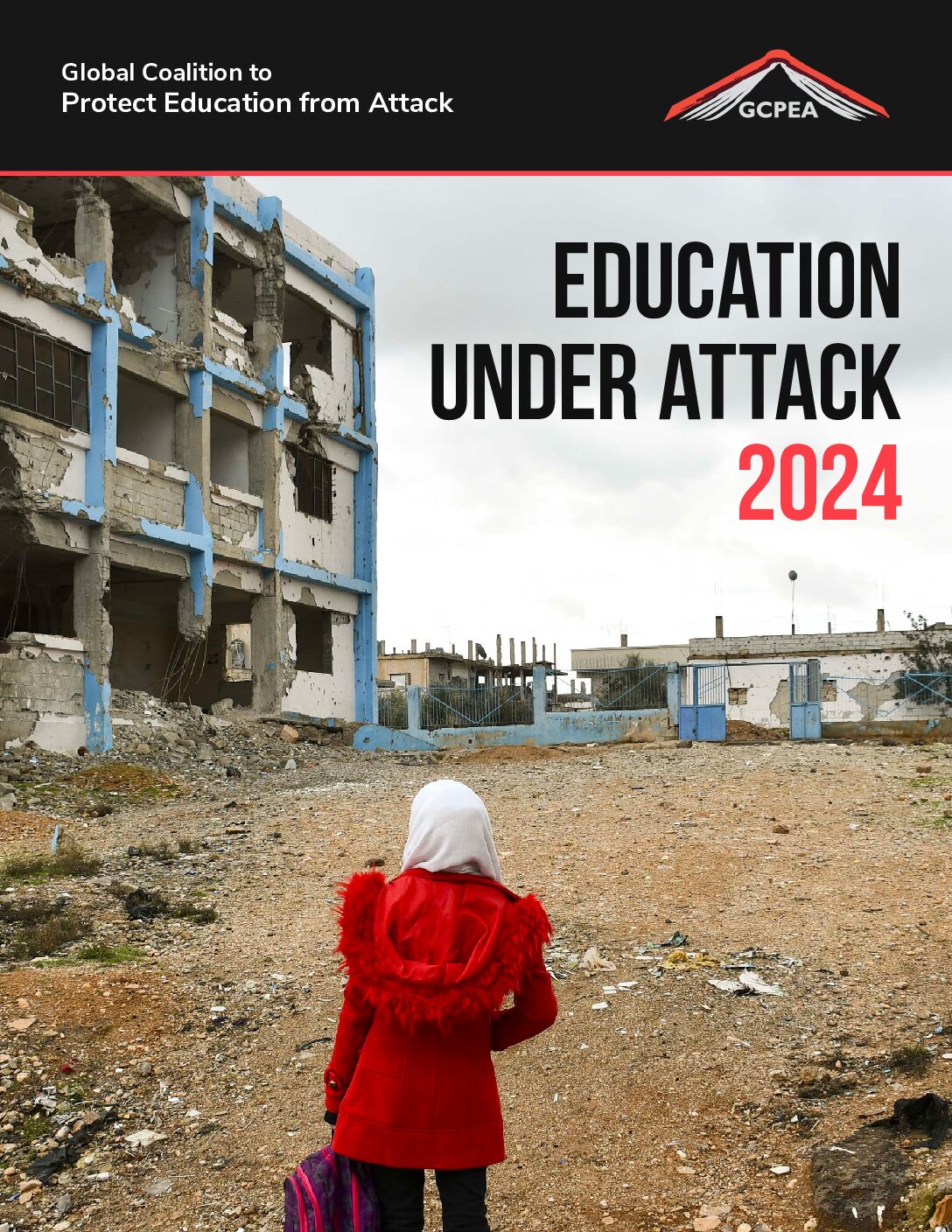GCPEA News
The Day The Militias Arrived At Their Schools
International Political Forum, December 23, 2014
Between 2005 and 2012, armed groups have used education institutions for their own purposes in at least 24 countries in conflict, according to Human Rights Watch. Last week at the United Nations in Geneva, 29 nations supported a number of guidelines in order to protect schools and universities from military use.
Arnel Mansinugdan is from Esperanza, in the province of Agusan in the Philippines. In 2009, Arnel’s school was forced to shut down after elements of the 26th Infantry Battalion of the Philippine Army (IBPA) camped in the center. Arnel was ten years old and there was a total of 185 children in the community. Most of them were also in danger of being recruited to become armed members. Previously, in 2010, the Armed Forces of the Philippines had also used public schools to keep weapons and ammunition.
In the last ten years, it has been possible to see similar occurrences in the other 23 countries named across the world. For example, in 2012, the UN recorded 36 incidents of schools in Yemen being used for weapons storage, sometimes with their closure as a result; 124 schools in South Sudan were used for military purposes; and in Pakistan colleges and schools have submitted claims for damages, after they were used to house up to 40,000 security personnel, according to the UN and the GCPEA.
In 2012, a group of Syrian boys in Hama City (central Syria), watched as three army soldiers converted their school into barracks by filling classrooms with sleeping cots, and encircling playing fields with barbed wire. Many schools like Arnel’s and that of the Syrian boys have been converted into real fortifications where armed groups have stacked assault rifles in hallways, hidden grenades under desks, and parked armored vehicles in gymnasiums.
In more than half of the affected countries in which schools have been requisitioned, government armed forces, multinational forces and peacekeepers have been the ones to do so, as well as anti-government armed groups.
The result is that children have been killed or injured and many schools have been destroyed. In 2006, when the Army of the Democratic Republic of Congo occupied the courtyard of the primary school in Mbau, Beni territory, they burned school doors and desks, used classrooms as toilets, and looted stationery and other learning materials.
Furthermore the rates of students who drop out at the schools has been found to increase. Experts are especially concerned about the impact in the quality of the system and the consequences on girls and on poor students.
“Sometimes schools are more or less fully destroyed; the militias use desks, benches and books for firewood or they simply damage the whole schools with the intention to harm the community” said Ms Silje Skeie, senior education advisor at the Norwegian Refugee Council.
One of the main consequences is that “ boys avoid coming back to school in fear of forced recruitment to armed groups while girls are afraid of sexual violence. Occupation always disrupts education, for days, weeks or months”, said Ms Skeie.
One of the biggest dangers can come afterwards. “The presence of armed fighters in a school can turn the school into a likely target for military actions, causing harm to pupils and school staff or even resulting in death. It also creates an insecure school environment, and when students do not feel safe they tend to stay away from school”, said Ms Skeie.
“During the war in Gaza this summer, there were several examples of schools being bombed after they had been used to place rockets. It is an example of two ‘wrongs’; both using schools for military action as Hamas did and attacking the schools on this basis as done by the Israelis,” she said.
Diya Nijhowne, the Director of the Global Coalition to Protect Education from Attack (GCPEA), said that “the fact that the children’s education has been disrupted may result in them discontinuing their education”.
What solutions can be found?
Norway and Argentina led a meeting last week in the UN in Geneva to launch the new Guidelines for Protecting Schools and Universities from Military Use during Armed Conflict.
The Guidelines are a way to encourage “all states to take action to deter the use of schools by armed forces and groups in contravention of applicable international law”, according to the GCPEA.
Ms Skeie believes that “for the guidelines to be effective, it is important that they are operationalised in a way that is appropriate in different countries. I also believe that the local communities are crucial for the protection of schools”. The goal is that new states will make a commitment giving their support by moving the conversation forward into practical.
Ms Nijhowne, the director of GCPEA, said that “the ultimate aim is for states and non-state armed groups to incorporate the Guidelines into the legislation and military doctrine so that schools are kept off the battlefield in the midst of conflict”.
Along with the new Guidelines, there have already been other good practices in order to reduce this issue. According to GCPEA’s reports, “India’s Supreme Court had in two recent cases also sided with complainants against security forces using. State-level courts in India have also had some success in clearing schools of security forces”. In another case in Colombia, the high court agreed on moving the army station, which had previously been attacked by the FARC, far away from the school, and its first location.



